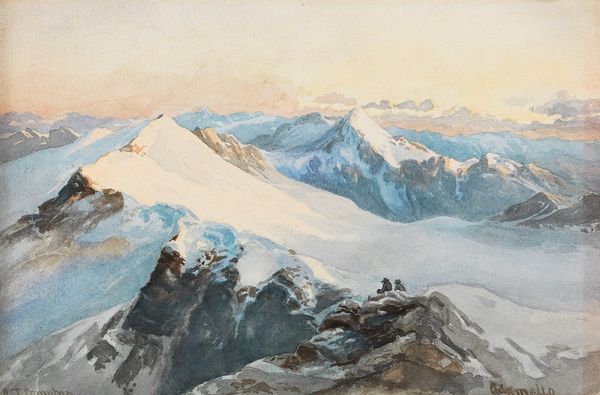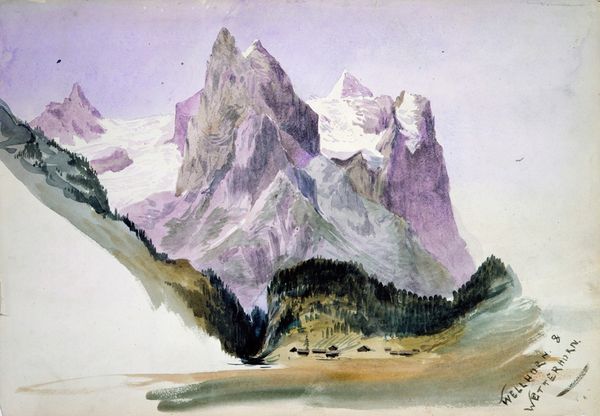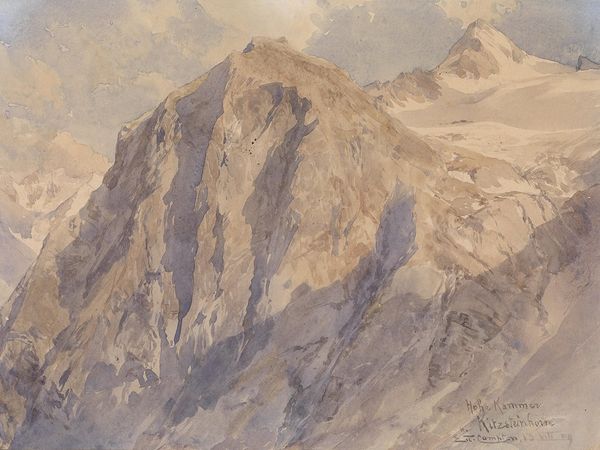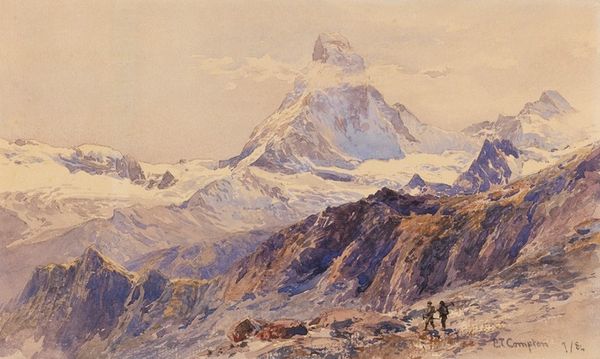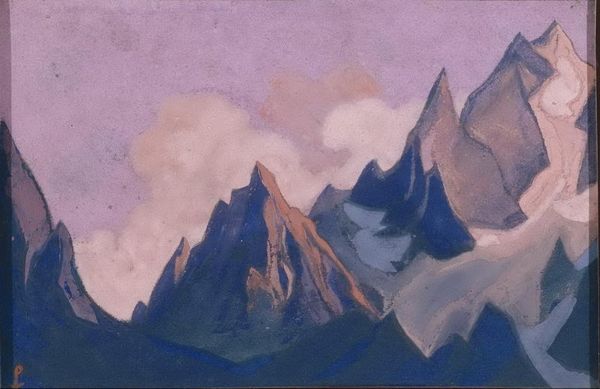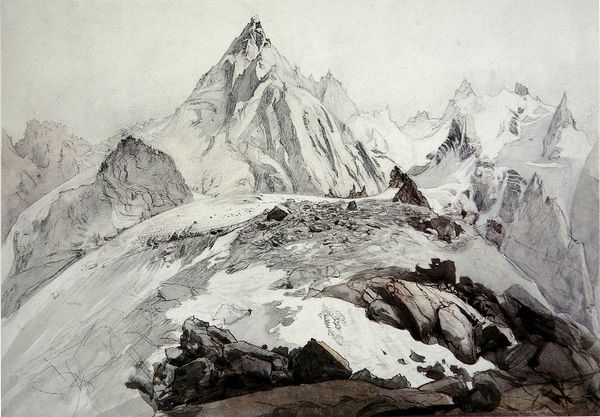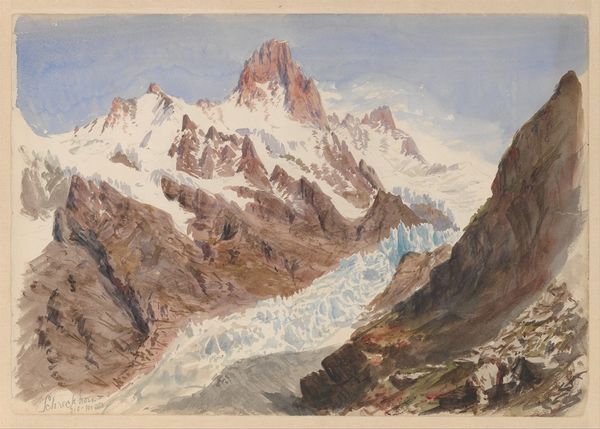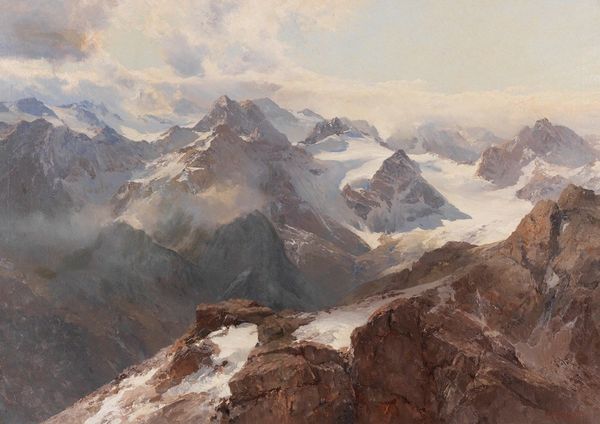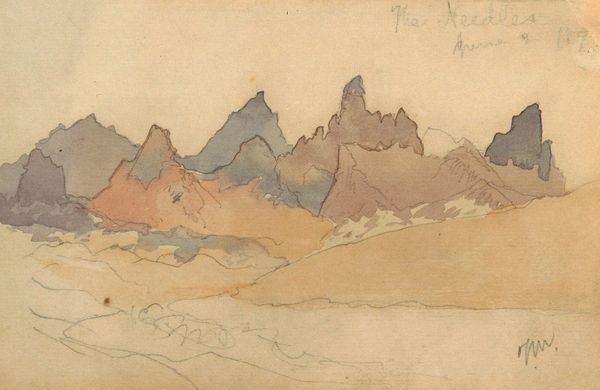
Copyright: Public Domain: Artvee
Thomas Moran made this watercolor, "Index Peak, Clark’s Fork, Wyoming", likely on site in 1892, using a portable kit of paints and brushes. The paper itself is humble, even a bit coarse, chosen for its ability to absorb the washes of color. Moran builds up the scene layer by layer, using the transparent quality of watercolor to create a sense of depth and atmosphere. It’s a quick, efficient medium, well-suited to capturing the fleeting effects of light and shadow in the wilderness. The choice of watercolor speaks to a particular moment in the history of landscape art. Moran was part of a generation of artists who sought to document the American West, often with the support of government expeditions and railway companies. His images, like this one, played a role in shaping perceptions of the frontier, encouraging tourism and resource extraction. Consider the labor involved, not just in Moran's act of painting, but in the broader project of westward expansion. This work is more than just a pretty picture, it's a document of a complex and contested landscape. By focusing on its materials and making, we can better understand its cultural significance.
Comments
No comments
Be the first to comment and join the conversation on the ultimate creative platform.
